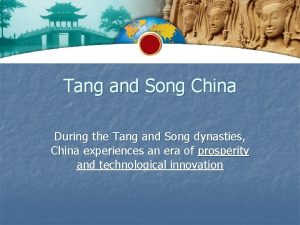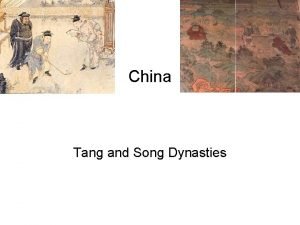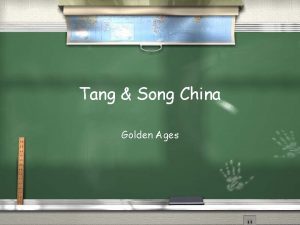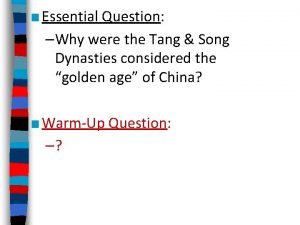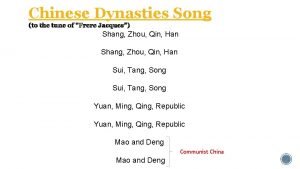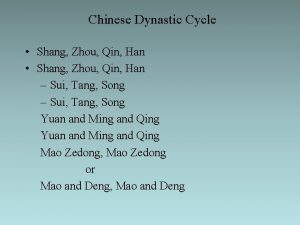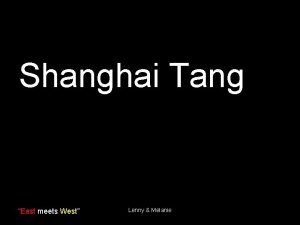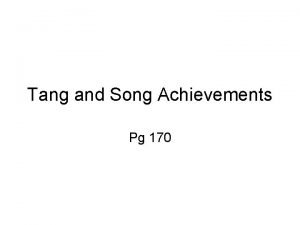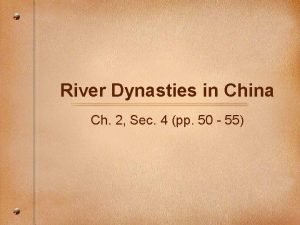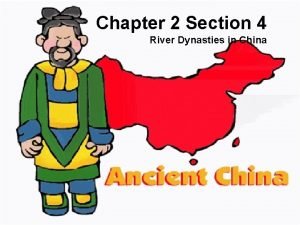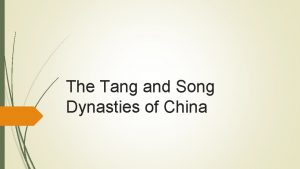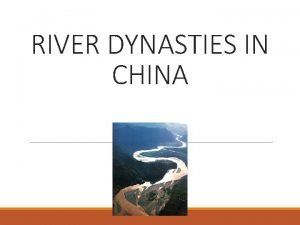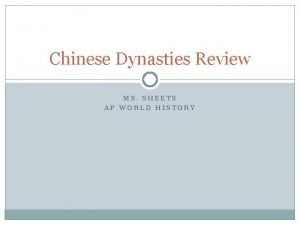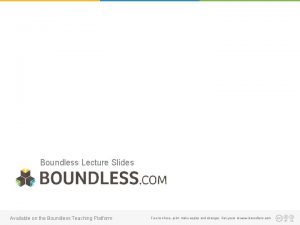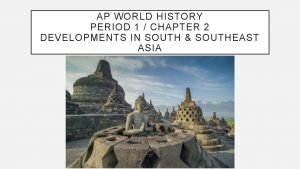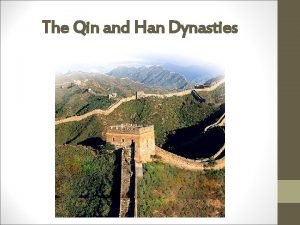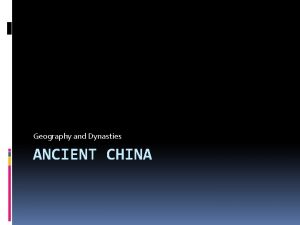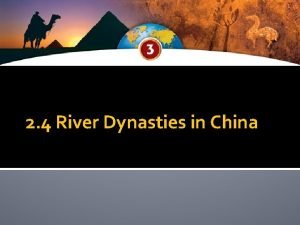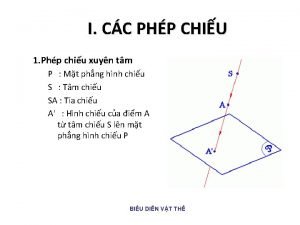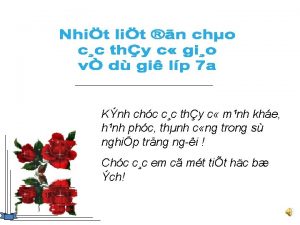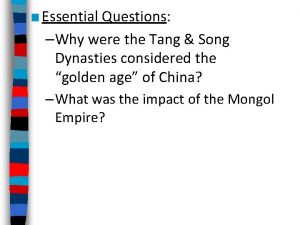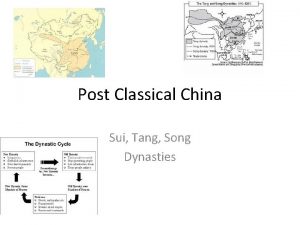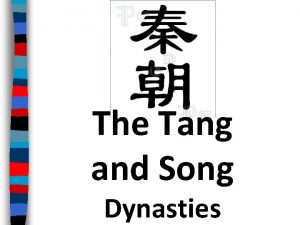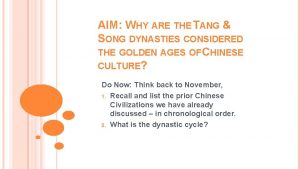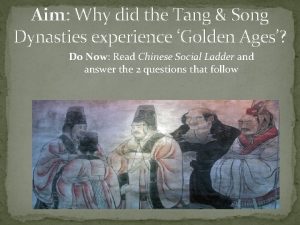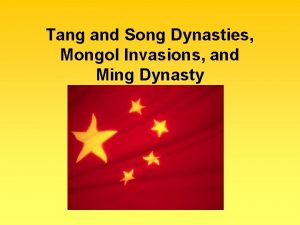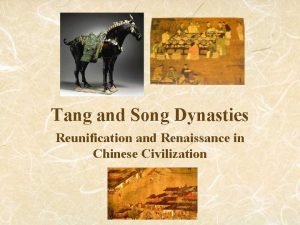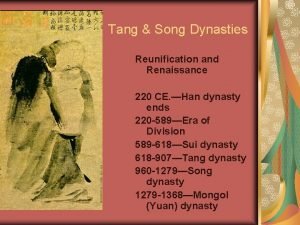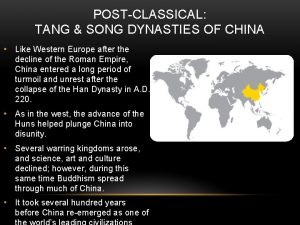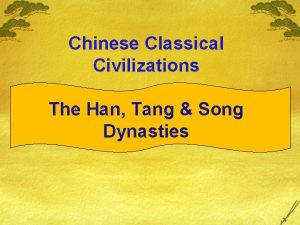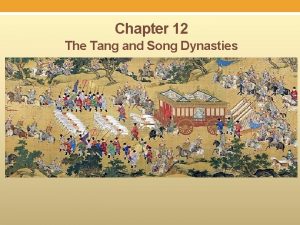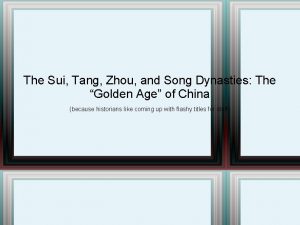Essential Questions Why were the Tang Song Dynasties









































- Slides: 41

■ Essential Questions: –Why were the Tang & Song Dynasties considered the “golden age” of China? – What was the impact of the Mongol Empire?

Classical China During the Classical Era, the emperors of Han China created large empire & developed numerous innovations The Silk Road trade route brought Civil service Silk-making exams technology for Chinese luxury goods to Europe & Asia gov’t employees that attracted based trade and increased on Confucian from outside teachings China cultural diffusion

Post-Classical China Like the Roman Empire, Classical China under the Han Dynasty entered an era of decline & eventually fell

After the Han Dynasty collapsed in 220 A. D. , no emperor was strong enough to unify China Over the next 350 years, more than 30 local dynasties rose & fell

In 589, China was unified …the restoration of the again & a strong central examination system government was restored. . . allowed intelligent During the Tang & Song Dynasties, China experienced bureaucrats to help an extended “golden age” &manage becamethe theempire richest, most powerful, & most advanced country in the world

Emperors did their best to Chinese merchants relied Golden of Post-Classical try. The to protect the. Age routes on ocean routes China as well to along the Silk Road trade with India & Arabia ■ Text Increased trade led to the spread of Chinese culture (centralized gov’t, Confucianism, & writing) to Korea, Japan, & Southeast Asia For the 1 st time in China’s history, emperors encouraged foreign trade

Increased trade helped spread Buddhism throughout China

Chinese Innovations ■ The Tang & Song dynasties were eras of major technological advancement: –The technologies helped make China the most advanced country in the world –Much of China’s technology spread to other people across trade routes Class Activity: Working with a partner, guess what each of the following 10 Chinese innovations are

1. Mechanical Clock

. Magnetic compass

. Gunpowder

4. Printing Press

5. Paper money

6. Chinese writing

7. Ship building

8. Vaccination

9. Silk weaving

10. Porcelain

The End of the Golden Age ■ Despite the wealth & culture during under the Tang & Song Dynasties, the Chinese were briefly overthrown by the Mongols –From 1279 to 1368, foreign nomads called the Mongols ruled China

Who were the Mongols? The Mongols were among the numerous nomadic tribes who lived in Central Asia

Who were the Mongols? The Mongols lived in the harsh climate of the Eurasian steppe, an area with little rain & extreme temperatures Mongol life centered on herding animals, especially horses Mongols lived as nomadic clans, constantly searching for better pasture lands

As a result of their lifestyle, the Mongols were tough Who were the Mongols? warriors who occasionally raided nearby settlements From 1200 to 1206, a clan leader named Genghis Khan unified the Mongols Genghis Khan built a powerful Mongol army & began a 21 -year conquest of Eurasia


Russia Under Genghis & later khans, the Mongols conquered… Central Asia the Islamic Empire China Korea


How did the Mongols create this massive empire? Mongol soldiers were excellent horsemen; Used the horse saddle to shoot arrows while riding

How did the Mongols create this massive empire? If an enemy refused As the Mongol reputation to surrender, Genghis spread, many towns Genghis was a brilliant military would order the death surrendered to Genghis organizer & strategist, but his of the entire population without a fight& fear greatest tactic was terror

“In the countries that have not yet been overrun by them, everyone spends the night afraid that they may appear there too. ” (Arab historian)

The Impact of the Mongol Empire The Mongols were Mongol khans (rulers) often merciless in battle, adopted parts of the culture of but tolerant as rulers the people they conquered In the East, Mongols embraced Chinese culture In the West, Mongols converted to Islam

Chinese technologies The Impact of the Mongol Empire like gunpowder & But diseases like theto Mongol khans The era from the mid-1200 s the magnetic compass plague (Black Death) brought stability & the mid-1300 s is called the reached Europe. Peace”) too order to Eurasia Pax Mongolica (“Mongol During the Pax Mongolica, the Mongols guaranteed safe passage across the Silk Road As a result, trade & cultural diffusion increased between Europe & Asia

After the death of Genghis Khan, the Mongol Empire was divided into 4 major khanates each ruled by a son or grandson of Genghis The Mongol destruction of Kiev increased the importance of Moscow in Russia The khanate in Persia helped control the Silk Road The Mongols were the first non-Muslims to rule over the Islamic Empire

After the death of Genghis Khan, the Mongol Empire was divided into 4 major khanates each ruled by a son or grandson of Genghis But the most significant khanate was the Mongol rule over China In 1279, Genghis’ grandson Kublai Khan became the first foreign leader to rule China

Kublai enjoyed Chinese Kublai Khan began a Kublai Khan culture so much that he new era in China called moved the Mongolian the Yuan Dynasty capital to China But, he excluded the Chinese from serving in high gov’t offices & relied on foreigners to serve in his government

Kublai proved to be a good emperor for China Under Kublai, foreign trade with China increased due to the Pax Mongolica He built roads & extended the Grand Canal to help improve transportation in China

In 1275, a European Marco. Kublai Polowas so impressed merchant named with Marco Polo that he Marco Polo visited employed him in the Kublai Khan’s court Yuan gov’t for 17 years When Marco Polo returned to Italy in 1792, his stories of China increased European demand for Asian trade

By the time of Kublai’s death in 1294, the In 1480, under Ivan. Empire III Russia gained entire Mongol was growing weak independence from Mongol rule & started the Romanov Dynasty In 1370, the Mongols lost control of Central Asia In 1330, the Mongols lost control of Persia In 1368, the Chinese overthrew the Mongols & started the Ming Dynasty

The End of the Golden Age ■ Despite the wealth & culture during under the Tang & Song Dynasties, the Chinese were briefly overthrown by the Mongols –From 1279 to 1368, foreign nomads called the Mongols ruled China

In 1368, the Chinese overthrew the Mongols & established the Ming Dynasty The Ming emperors encourage overseas trade…

…and began a series of explorations led by Zheng He to demonstrate Chinese superiority

Read excerpt and than the Zhengthe He had better from ships &Zheng traveled. He farther With fleet of over 100 ships, any a. European explorers would for 100 years Treasure Fleet Expeditions Zheng He led 7 different expeditions Zheng He explored areas along the Indian Ocean & Africa, expand trade, & collected tribute from foreigners

Chinese Isolation ■ After the 7 th treasure fleet voyage in 1433, Chinese leaders unexpectedly ended the expeditions & retreated into isolationism –Scholar-officials complained that Zheng He’s voyages used valuable resources that were needed to defend China –China’s official trade policy was to keep the influence of outsiders to a minimum –China’s geography & gov’t policies kept it relatively isolated for the next 300 years until European merchants in the 1800 s demanded access to Chinese trade
 The tang and song eras were a golden age of
The tang and song eras were a golden age of Tang tang tang song
Tang tang tang song Sui tang and song dynasties
Sui tang and song dynasties Ming and qing dynasty venn diagram
Ming and qing dynasty venn diagram Tang and song dynasty achievements
Tang and song dynasty achievements Sui tang song
Sui tang song Golden age of tang and song dynasties
Golden age of tang and song dynasties Sui tang and song dynasties
Sui tang and song dynasties Achievements of the tang and song dynasties
Achievements of the tang and song dynasties How did the sui and tang dynasties reunite china
How did the sui and tang dynasties reunite china The tang and song eras were a golden age of
The tang and song eras were a golden age of Shang zhou qin han
Shang zhou qin han Why why why why
Why why why why Khi nào hổ mẹ dạy hổ con săn mồi
Khi nào hổ mẹ dạy hổ con săn mồi Khi nào hổ con có thể sống độc lập
Khi nào hổ con có thể sống độc lập Ming china spice chart
Ming china spice chart Shang zhou qin han song
Shang zhou qin han song Tang section 1
Tang section 1 Shanghai tang song
Shanghai tang song Ruler of the land 618
Ruler of the land 618 Tang and song dynasty achievements
Tang and song dynasty achievements Sui tang song
Sui tang song Plamatic acid
Plamatic acid Dont ask why why why
Dont ask why why why Introduction of delhi
Introduction of delhi Chapter 2 section 4 river dynasties in china
Chapter 2 section 4 river dynasties in china Social classes in the han dynasty
Social classes in the han dynasty Water clocks han dynasty
Water clocks han dynasty Empress wu accomplishments
Empress wu accomplishments River dynasties in china
River dynasties in china Ap world history chinese dynasties
Ap world history chinese dynasties Chinese dynasties
Chinese dynasties Srivijaya empire ap world history
Srivijaya empire ap world history Four chinese dynasties
Four chinese dynasties Chinese dynasties
Chinese dynasties China dynasty
China dynasty River dynasties in china
River dynasties in china What makes a song a song
What makes a song a song Giọng song song là gì?
Giọng song song là gì? Hình chiếu vuông góc
Hình chiếu vuông góc Cách chứng minh hai đường thẳng song song
Cách chứng minh hai đường thẳng song song đoạn mạch mắc song song
đoạn mạch mắc song song

